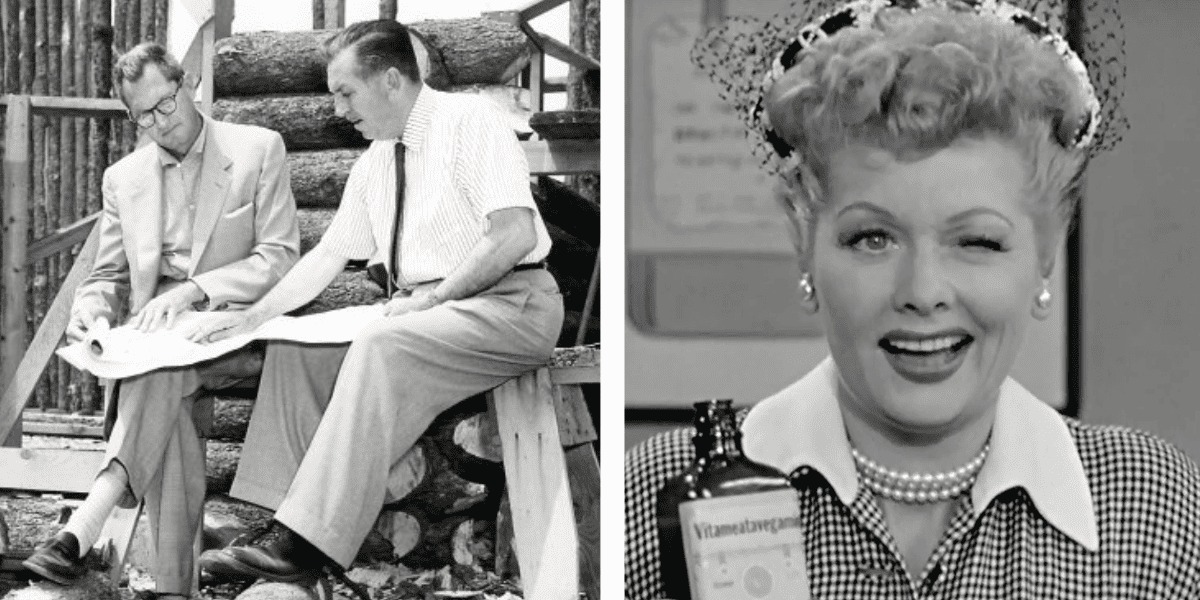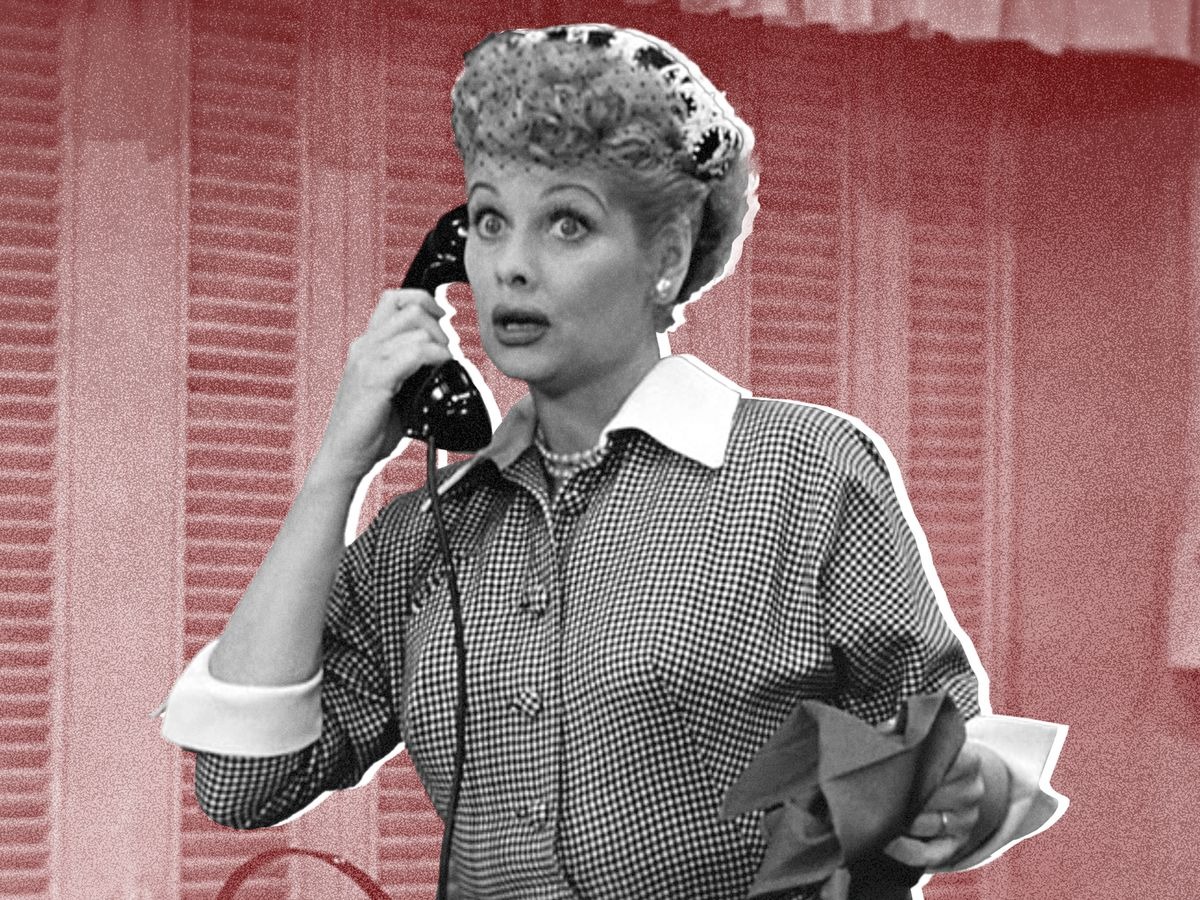
Two legendary figures of 20th-century entertainment dedicated a significant portion of their lives to building legacies that would endure long after their passing. Despite their paths seldom intersecting, the striking parallels in their journeys have etched their names as icons in the realms of television, film, and entertainment. The enduring legacies of Walt Disney and Lucille Ball, marked by their commonalities, have transcended time and will undoubtedly leave an indelible mark for generations to come.
In the annals of Hollywood history, few faces are as cherished and instantly recognizable as those of Walt Disney, the visionary dream-weaver, and Lucille Ball, the vivacious “screwball redhead” of extraordinary talent. Born with a decade between them—Walt being the elder—their ascent to stardom in distinct niches of the film and television landscape reveals astonishing similarities that paved the way for their global acclaim.
Amid their respective journeys to prominence, Disney and Ball encountered akin challenges and achievements. Their collective efforts not only secured their rightful positions within the narrative of Hollywood’s Golden Age but also profoundly shaped the cultural fabric and daily existence of 20th-century America.

Both Walt and Lucy made California their home and workspace for the better part of their lives. While they were known for mingling with luminaries—Walt’s social circle encompassed personalities like P. L. Travers, Ray Bradbury, Gene Autry, John Wayne, and even a pre-Presidential Ronald Reagan and Vice President Richard Nixon; Lucy rubbed shoulders with the likes of William Holden, Rock Hudson, Harpo Marx, John Wayne, Carol Burnett, Danny Kaye, and Dean Martin—their paths rarely converged.
Remarkably, save for occasional appearances at awards ceremonies in Hollywood, a singular instance saw Walt and Lucy share a stage: June 24, 1956. This occasion united them with other luminaries in Hollywood, celebrating Ed Sullivan’s eighth television show anniversary.
However, a revealing insight from Top Disney unveils the profound respect that bound the visionary entrepreneur and television’s beloved redhead. This revelation underscores a connection that went beyond appearances, reflecting a shared appreciation for each other’s craft: a shared ethos that ultimately defined their lasting influence.
Pioneers in Television and Film
Ezoic
Walt Disney and Lucille Ball were not merely familiar faces in Hollywood; they were true pioneers who reshaped their respective industries. Walt had already established his reputation through his animated shorts when he embarked on a groundbreaking endeavor: the creation of a feature-length animated film. This innovative concept was virtually unheard of in Hollywood, marking uncharted territory that could have acted as a driving force for Walt’s ambitions.
During the early 1930s, Walt nurtured a vision of producing an animated feature that would utilize color film and convey a sense of depth. This aspiration culminated in “Snow White and the Seven Dwarfs” (1937), his inaugural foray into feature-length animation. To bring this vision to life, Walt introduced the multiplane camera, a revolutionary invention that allowed filming through multiple layers of intricate drawings. This ingenious device empowered the camera lens to focus on any layer, resulting in a visually stunning, three-dimensional illusion.The introduction of the multiplane camera marked the initial chapter in a series of trailblazing innovations across Walt’s illustrious career. His contributions to the film industry would continue to unfold, showcasing his unwavering commitment to pushing boundaries.
Meanwhile, as Walt Disney was revolutionizing the world of filmmaking, Lucille Ball and her husband, Desi Arnaz, were busy pioneering the landscape of television. The early 1950s saw the emergence of two brilliant concepts that would redefine the standards for filming live shows, all thanks to the dynamic duo of Lucy and Desi, along with their iconic creation, “I Love Lucy.”

This beloved show, starring Lucille Ball, Desi Arnaz, William Frawley, and Vivian Vance, proved to be a game-changer. Notably, it was the first live show to employ multiple cameras, capturing simultaneous angles while a live studio audience watched in awe. Moreover, “I Love Lucy” set a new precedent by opting to film on 35mm film rather than relying on live broadcasts, a practice that was groundbreaking at the time. The combined efforts of Lucille Ball and Desi Arnaz left an indelible mark on the television industry, elevating it to new heights of creativity and sophistication.
The Early 1950s: A Turning Point in the Lives of Walt Disney & Lucille Ball
Each Saturday marked “Daddy’s Day” for Walt Disney and his daughters, Diane and Sharon. They shared cherished outings that encompassed a variety of activities. As time went on, Walt noticed that many of these activities were centered around children’s enjoyment, leaving parents as mere spectators. Driven by a desire to enhance this experience, he sought a solution. When he couldn’t find one, he decided to forge his own path. Though Disneyland materialized after his daughters had grown, Walt remained steadfast in his commitment to making his vision a reality.
In 1953, he acquired 160 acres of land in Anaheim, California. The following year, Walt and his team of “Imagineers” embarked on the ambitious endeavor of constructing Disneyland, which officially opened its gates in July 1955. While it marked the inception of numerous Disney Parks, Disneyland held a special place, being the sole park completed during Walt’s lifetime. Its very name became synonymous with Walt Disney himself.
As Walt’s imagination took flight in Anaheim, Lucille Ball and Desi Arnaz were embracing their alter egos, Ricky and Lucy Ricardo, on the iconic “I Love Lucy” show. This beloved sitcom made its debut on October 15, 1951, gracing the CBS television network. A mere 15 months later, the show had soared to unparalleled popularity. On January 19, 1953, an astounding 72% of American households, equivalent to 44 million individuals, tuned in for the episode titled “Lucy Goes to the Hospital.” This viewership surpassed that of President Dwight D. Eisenhower’s inauguration the following day by a margin of 15 million.
“I Love Lucy” continues to hold an esteemed record to this day: the highest household rating for any TV series in a season, achieving a remarkable 67.3 rating during its second season (1952-1953). The sitcom’s enduring popularity secures its place in television history as one of the most cherished and enduring.
Though Walt Disney and Lucille Ball led divergent lives, their shared dedication and unwavering commitment to their respective crafts have left behind enduring legacies. These legacies persistently kindle laughter and delight among countless fans, a tradition poised to endure for generations to come.
